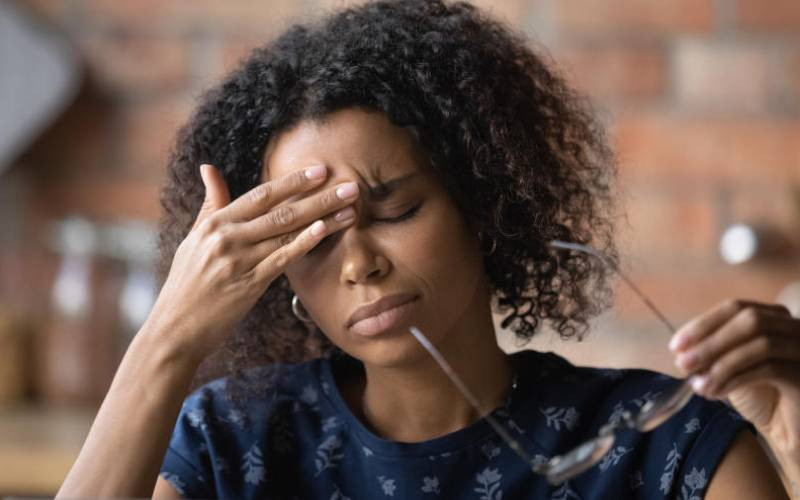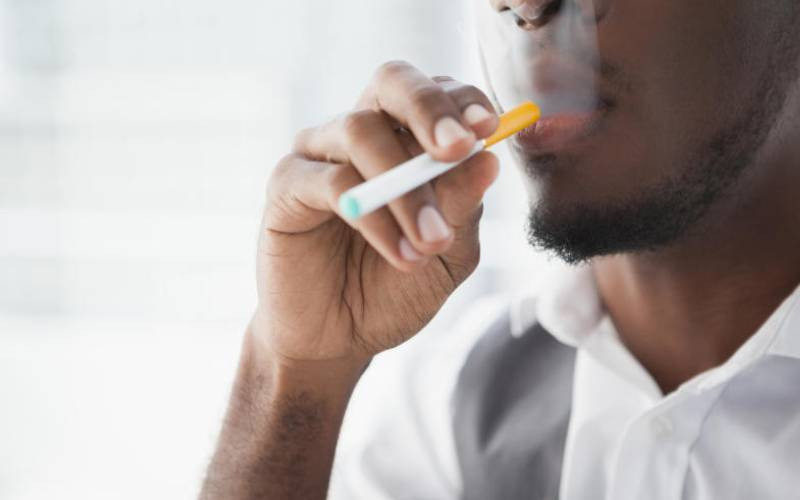
Most women have a frustrating tale about back pain. It is a fact that back pain in women tends to increase significantly with age. Some of our mothers have worn a medical corset at some point.
Sometimes you find discomfort bending to tie shoelaces yet you cannot recall any recent injury to blame. While most back pains clear up on their own, medication, exercise, lifestyle change or even surgery may be required to deal with chronic back pain conditions.
Doctors at the Orthobridge Orthopedic Centre in Nairobi categorise back pain that occurs suddenly and lasts less than six weeks as acute. On the other hand, back pain that persists for more than three months is classified as chronic.
Acute back pain is often caused by a fall or heavy lifting whereas the cause of chronic back pain is usually specific and can be identified through tests or imaging. It is unfortunate that most women live with back pain to a point that if they woke up without it, they would find something amiss.
Red flags
Even though most back pains are non-life-threatening, there are red flags that signal urgent medical attention.
Back pain with loss of bladder control
Accompanying fever
Worsens over time
Causing numbness of the groin region and leg weakness
Discomfort while sitting or sleeping
Causes of back pain in women
Hormones and menopause
Low back pain has been sighted as one of the most prevalent musculoskeletal issues women experience once menopause sets in. Menopause is accompanied by estrogen deficiency; estrogen plays a significant role in promoting the production of bone-forming cells.
A drop in oestrogen levels as is experienced during menopause correlates to reduced bone density; making women vulnerable to chronic back pain.

Pregnancy
Back pain during pregnancy is quite common and is mostly due to:
Weight gain: the growing bump can put additional pressure on blood vessels and nerves located in the back and pelvic regions.
Posture; because pregnancy repositions the centre of gravity, a pregnant woman gradually, sometimes without noticing, adjusts her posture to maintain balance. This may as well put some level of strain on back muscles.
Separation of muscles: the expansion of the uterus during pregnancy forces the muscles aligned from the rib cage to the pubic bone to stretch out, causing pain or discomfort.
Difficult vaginal delivery especially due to a large newborn can cause tailbone pain, also known as coccydynia. During childbirth, the tailbone can be pushed out of its normal range of motion causing pain when one gets up from a chair or bed. Tailbone resolves on its own after some weeks or months.
Recovery after pregnancy and childbirth is crucial for the body. One needs to adjust to the loss of muscle tone and joint instability, especially in the lower body. According to research, an average of six to eight weeks is needed to allow the return to joints to their pre-pregnant state without risking more trauma to the hip and lower back areas.
Common back pain ailments in women
Endometriosis
The World Health Organisation estimates that roughly 10 per cent of women of reproductive age are affected by endometriosis. Endometriosis is characterised by the growth of tissue similar to the lining of the uterus outside of it.
This causes pain and to some extent, infertility. Patients with endometriosis may experience life-impacting symptoms that may interfere with their ability to function optimally. Patients may also experience back pain, especially during menstruation.
Endometriosis has no direct cure. However, treatment is offered to control symptoms. Surgery can be done to remove the lesions and scar tissues.
Dr Charles Muteshi, Endometriosis and Fertility Specialist at the Aga Kahn University Hospital advises that before surgery, thorough patient assessment should be done to reduce the risk of complications and multiple surgeries.
Dysfunction of the sacroiliac joint
The sacroiliac joint connects the pelvis to the area at the bottom of the spine. Compared to men, women anatomically have a smaller sacroiliac joint. This makes women more vulnerable to increased pressure, misalignment and strain on this joint that typically supports the upper body’s weight.
Pain in the SI joint may manifest as a dull or sharp pain over the buttocks or shooting pain inside of the thigh. The pain may make it uncomfortable to jog, run, climb a set of stairs or bend. Some may experience numbness and tingling in the buttocks and or thighs or feel generally unstable.
SI joint pain is countered using pain medication, supportive braces where need be and physical therapy.
Degenerative spondylolisthesis
Degenerative spondylolisthesis is characterised by progressive deterioration and weakening of the spine. The alignment of the spinal column gradually becomes weaker as one ages. It is diagnosed when one vertebra (the interlocking bones that form the spinal column) slips over the one below it.
Post-menopausal women may be at a higher risk of vertebra degeneration due to the incompetence of joints holding the vertebra in the line caused by declining estrogen levels. Oestrogen offers a great degree of protection for the musculoskeletal system; a decline can cause the vertebra to slip over.
To counter degenerative spondylolisthesis, patients are often advised to take bed rest and avoid strenuous activity.
Depending on the severity of the condition, manual manipulation by chiropractors or osteopathic physicians can offer physical therapy. Medication to prevent inflammation and braces can help improve the quality of life in patients.
 The Standard Group Plc is a multi-media organization with investments in media platforms spanning newspaper print
operations, television, radio broadcasting, digital and online services. The Standard Group is recognized as a
leading multi-media house in Kenya with a key influence in matters of national and international interest.
The Standard Group Plc is a multi-media organization with investments in media platforms spanning newspaper print
operations, television, radio broadcasting, digital and online services. The Standard Group is recognized as a
leading multi-media house in Kenya with a key influence in matters of national and international interest.










